Introduction #
The Laboro Tomato dataset comprises images capturing tomatoes in various stages of ripening, tailored for tasks involving object detection and instance segmentation. Additionally, the dataset offers two distinct subsets categorized by tomato size. These images were acquired at a local farm, utilizing two separate cameras, each contributing to varying resolutions and image quality.
Each tomato is divided into 2 categories according to size (normal size b_ and cherry tomato l_) and 3 categories depending on the stage of ripening:
- fully_ripened - complitely red color and ready to be harvested. Filled with red color on 90% or more
- half_ripened - greenish and needs time to ripen. Filled with red color on 30-89%
- green - complitely green/white, sometimes with rare red parts. Filled with red color on 0-30%
Summary #
LaboroTomato: Instance Segmentation Dataset is a dataset for instance segmentation, semantic segmentation, and object detection tasks. It is used in the agricultural industry.
The dataset consists of 804 images with 10610 labeled objects belonging to 6 different classes including b_green, l_green, l_fully_ripened, and other: b_half_ripened, l_half_ripened, and b_fully_ripened.
Images in the LaboroTomato dataset have pixel-level instance segmentation annotations. Due to the nature of the instance segmentation task, it can be automatically transformed into a semantic segmentation (only one mask for every class) or object detection (bounding boxes for every object) tasks. All images are labeled (i.e. with annotations). There are 2 splits in the dataset: Train (643 images) and Test (161 images). The dataset was released in 2020 by the Laboro.AI Inc, Japan.
Here is the visualized example grid with animated annotations:
Explore #
LaboroTomato dataset has 804 images. Click on one of the examples below or open "Explore" tool anytime you need to view dataset images with annotations. This tool has extended visualization capabilities like zoom, translation, objects table, custom filters and more. Hover the mouse over the images to hide or show annotations.

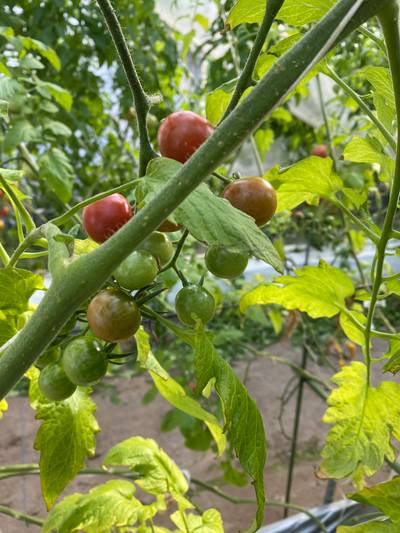

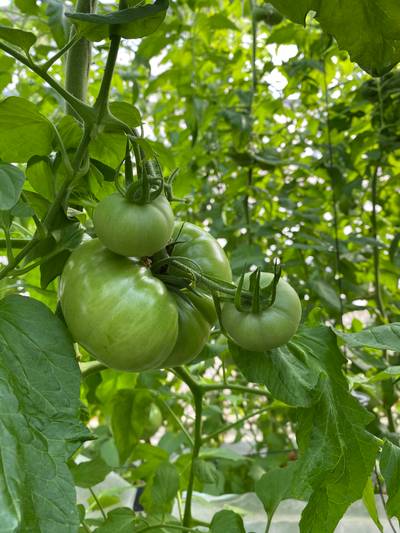

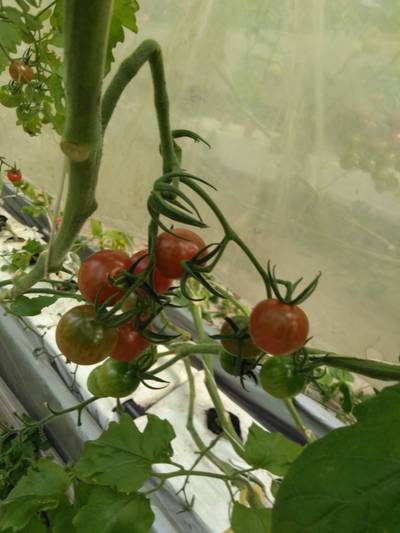

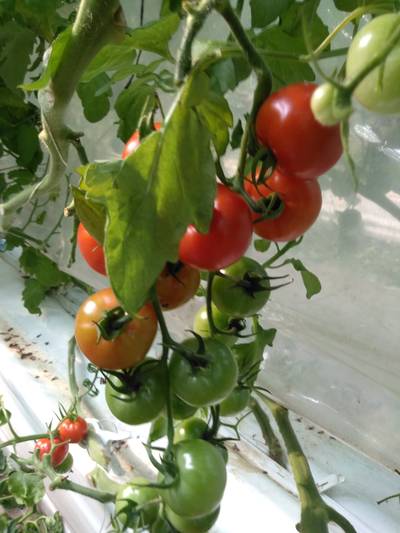

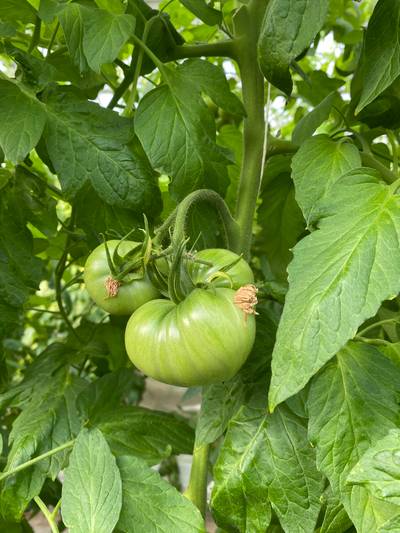



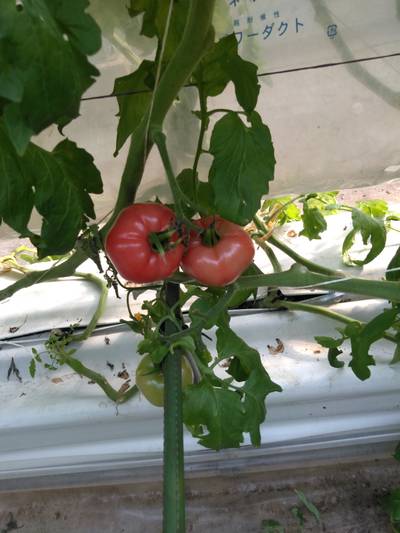

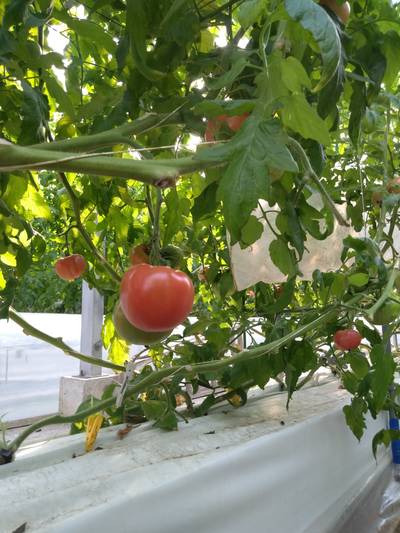



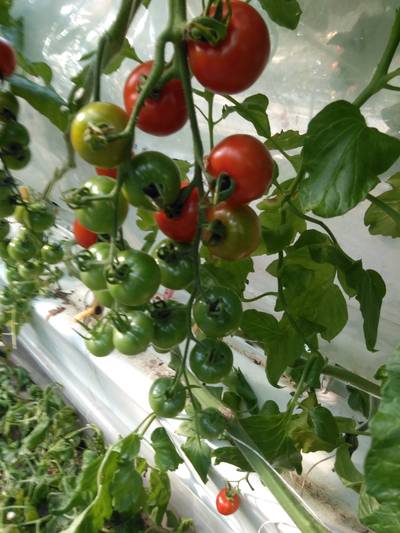

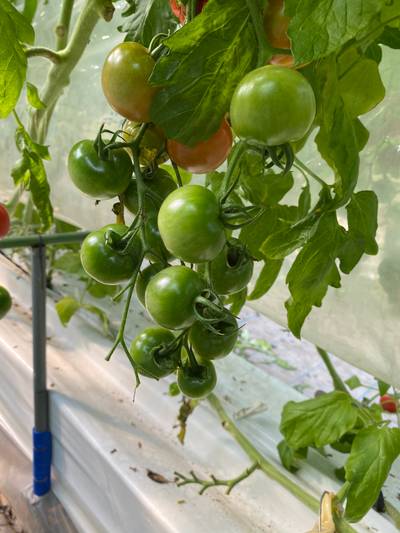

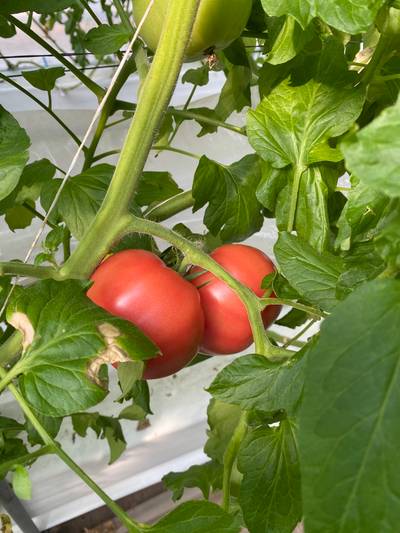

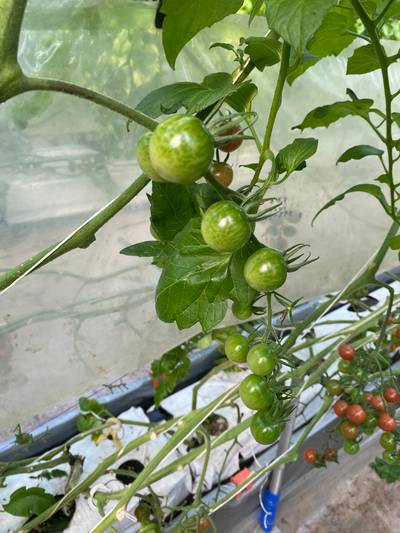

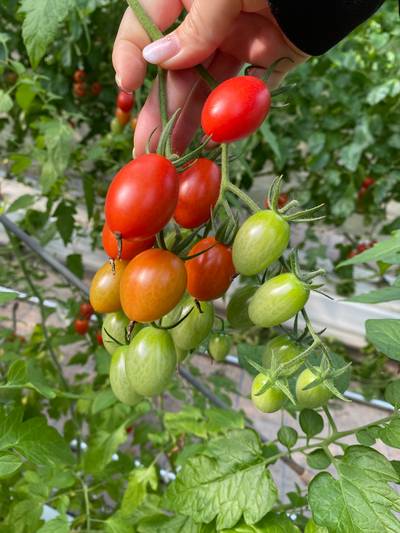



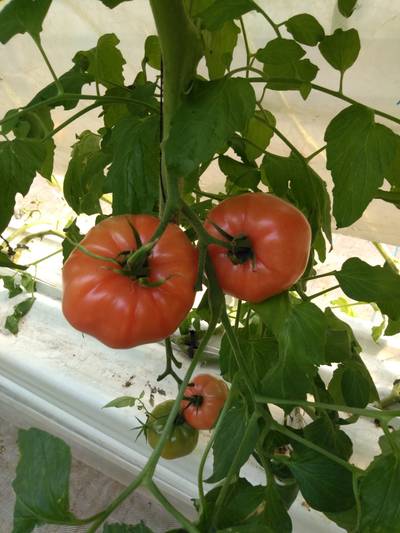

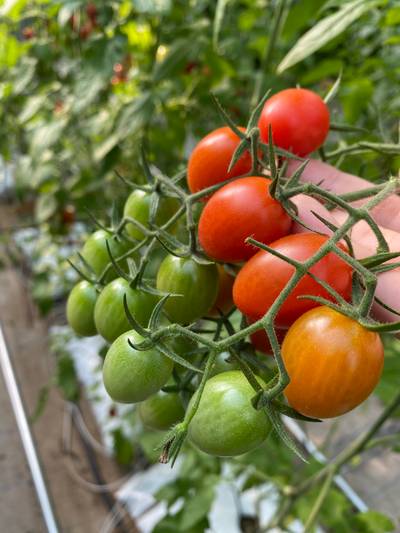

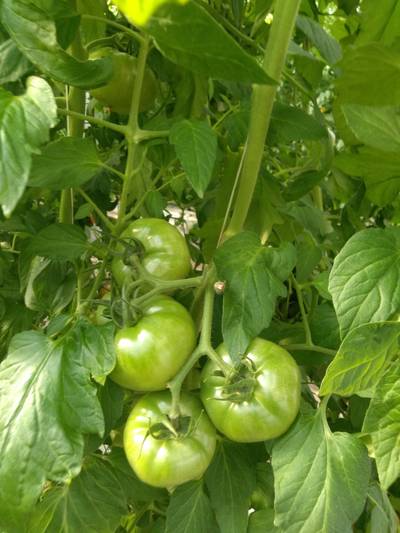

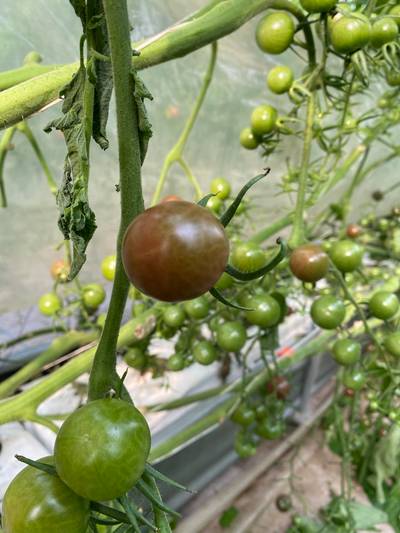





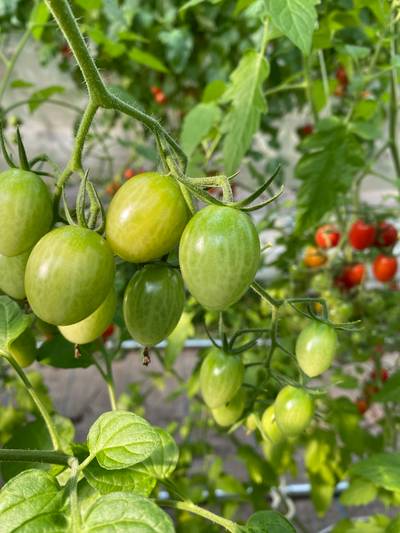

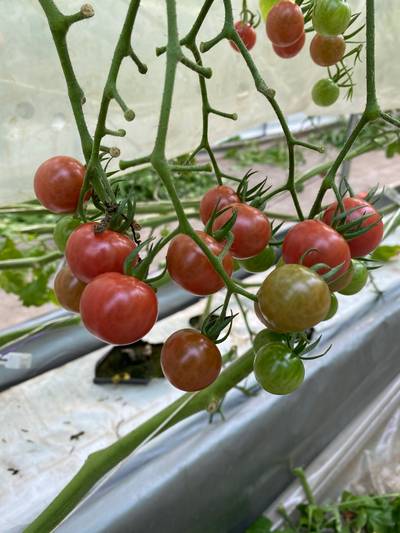

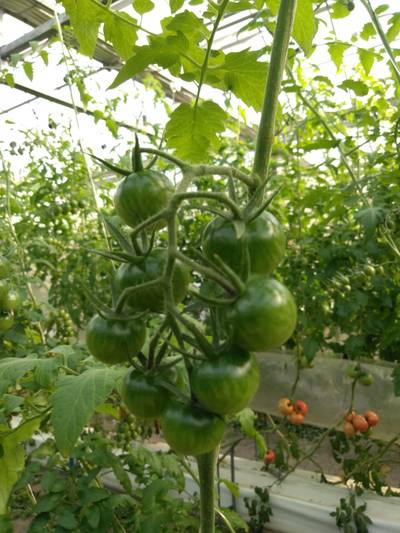

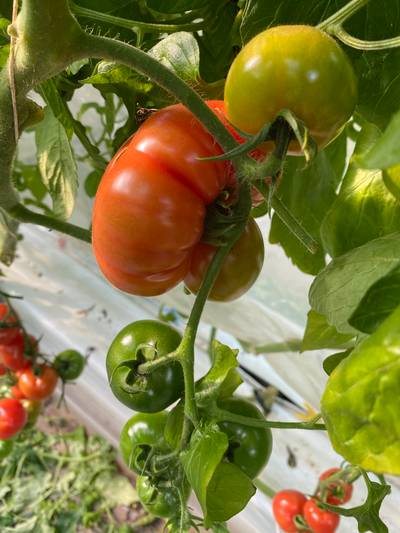

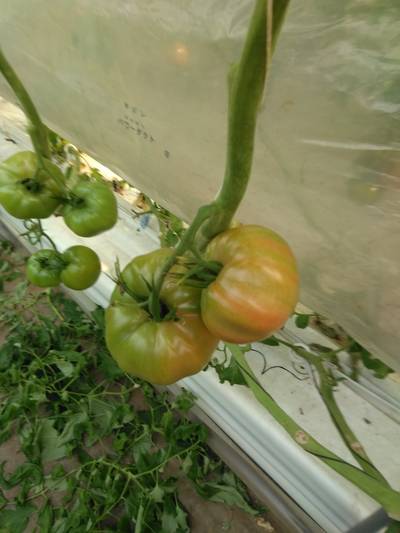



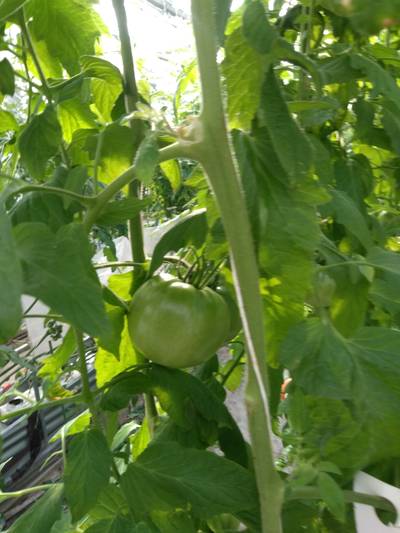

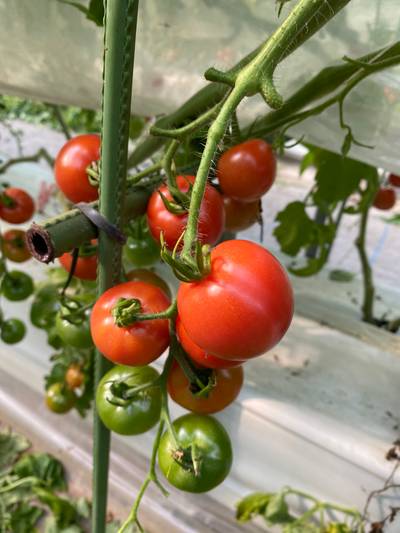

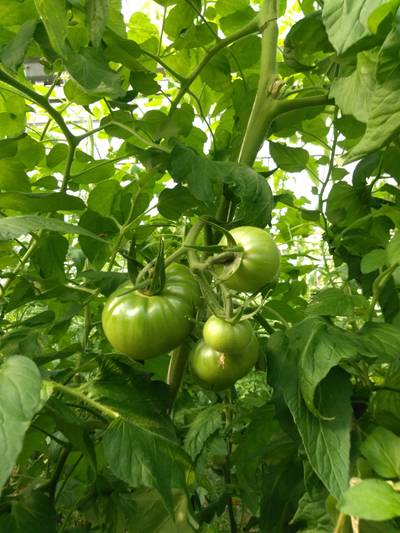
Class balance #
There are 6 annotation classes in the dataset. Find the general statistics and balances for every class in the table below. Click any row to preview images that have labels of the selected class. Sort by column to find the most rare or prevalent classes.
Class ㅤ | Images ㅤ | Objects ㅤ | Count on image average | Area on image average |
|---|---|---|---|---|
b_green➔ polygon | 430 | 2090 | 4.86 | 7.66% |
l_green➔ polygon | 376 | 4827 | 12.84 | 7.82% |
l_fully_ripened➔ polygon | 335 | 1355 | 4.04 | 4.81% |
b_half_ripened➔ polygon | 323 | 747 | 2.31 | 5.08% |
l_half_ripened➔ polygon | 322 | 1076 | 3.34 | 2.96% |
b_fully_ripened➔ polygon | 271 | 515 | 1.9 | 4.77% |
Co-occurrence matrix #
Co-occurrence matrix is an extremely valuable tool that shows you the images for every pair of classes: how many images have objects of both classes at the same time. If you click any cell, you will see those images. We added the tooltip with an explanation for every cell for your convenience, just hover the mouse over a cell to preview the description.
Images #
Explore every single image in the dataset with respect to the number of annotations of each class it has. Click a row to preview selected image. Sort by any column to find anomalies and edge cases. Use horizontal scroll if the table has many columns for a large number of classes in the dataset.
Class sizes #
The table below gives various size properties of objects for every class. Click a row to see the image with annotations of the selected class. Sort columns to find classes with the smallest or largest objects or understand the size differences between classes.
Class | Object count | Avg area | Max area | Min area | Min height | Min height | Max height | Max height | Avg height | Avg height | Min width | Min width | Max width | Max width |
|---|---|---|---|---|---|---|---|---|---|---|---|---|---|---|
l_green polygon | 4827 | 0.61% | 5.77% | 0% | 23px | 0.57% | 990px | 24.55% | 298px | 7.28% | 25px | 0.83% | 1053px | 34.82% |
b_green polygon | 2090 | 1.6% | 14.14% | 0.02% | 49px | 1.22% | 1751px | 42.4% | 472px | 11.52% | 40px | 1.32% | 1511px | 48.43% |
l_fully_ripened polygon | 1355 | 1.19% | 10.93% | 0.01% | 43px | 1.07% | 1495px | 37.08% | 407px | 9.9% | 41px | 1.31% | 1450px | 47.95% |
l_half_ripened polygon | 1076 | 0.88% | 7.78% | 0.01% | 49px | 1.22% | 1126px | 27.93% | 351px | 8.58% | 43px | 1.42% | 1105px | 36.54% |
b_half_ripened polygon | 747 | 2.21% | 15.09% | 0.03% | 81px | 1.95% | 1605px | 38.58% | 539px | 13.29% | 66px | 2.12% | 1680px | 53.85% |
b_fully_ripened polygon | 515 | 2.51% | 17.28% | 0.05% | 90px | 2.16% | 1658px | 41.12% | 586px | 14.54% | 101px | 2.55% | 1656px | 54.76% |
Spatial Heatmap #
The heatmaps below give the spatial distributions of all objects for every class. These visualizations provide insights into the most probable and rare object locations on the image. It helps analyze objects' placements in a dataset.

Objects #
Table contains all 10610 objects. Click a row to preview an image with annotations, and use search or pagination to navigate. Sort columns to find outliers in the dataset.
Object ID ㅤ | Class ㅤ | Image name click row to open | Image size height x width | Height ㅤ | Height ㅤ | Width ㅤ | Width ㅤ | Area ㅤ |
|---|---|---|---|---|---|---|---|---|
1➔ | b_fully_ripened polygon | IMG_1087.jpg | 4032 x 3024 | 1316px | 32.64% | 1391px | 46% | 11.64% |
2➔ | b_fully_ripened polygon | IMG_1087.jpg | 4032 x 3024 | 1250px | 31% | 1168px | 38.62% | 9.32% |
3➔ | b_green polygon | IMG_1064.jpg | 4032 x 3024 | 311px | 7.71% | 223px | 7.37% | 0.47% |
4➔ | b_half_ripened polygon | IMG_1064.jpg | 4032 x 3024 | 315px | 7.81% | 355px | 11.74% | 0.61% |
5➔ | b_green polygon | IMG_1064.jpg | 4032 x 3024 | 193px | 4.79% | 182px | 6.02% | 0.22% |
6➔ | b_fully_ripened polygon | IMG_1064.jpg | 4032 x 3024 | 304px | 7.54% | 323px | 10.68% | 0.59% |
7➔ | b_green polygon | IMG_1064.jpg | 4032 x 3024 | 389px | 9.65% | 380px | 12.57% | 0.87% |
8➔ | b_green polygon | IMG_1064.jpg | 4032 x 3024 | 305px | 7.56% | 322px | 10.65% | 0.4% |
9➔ | b_half_ripened polygon | IMG_1064.jpg | 4032 x 3024 | 423px | 10.49% | 380px | 12.57% | 0.94% |
10➔ | b_green polygon | IMG_1064.jpg | 4032 x 3024 | 513px | 12.72% | 462px | 15.28% | 1.52% |
License #
LaboroTomato: Instance Segmentation Dataset is under CC BY-NC-SA 4.0 license.
Citation #
If you make use of the LaboroTomato data, please cite the following reference:
@dataset{LaboroTomato,
author={Roman Trigubenko and hfujihara},
title={LaboroTomato: Instance Segmentation Dataset},
year={2020},
url={https://github.com/laboroai/LaboroTomato#readme}
}
If you are happy with Dataset Ninja and use provided visualizations and tools in your work, please cite us:
@misc{ visualization-tools-for-laboro-tomato-dataset,
title = { Visualization Tools for LaboroTomato Dataset },
type = { Computer Vision Tools },
author = { Dataset Ninja },
howpublished = { \url{ https://datasetninja.com/laboro-tomato } },
url = { https://datasetninja.com/laboro-tomato },
journal = { Dataset Ninja },
publisher = { Dataset Ninja },
year = { 2025 },
month = { dec },
note = { visited on 2025-12-08 },
}Download #
Dataset LaboroTomato can be downloaded in Supervisely format:
As an alternative, it can be downloaded with dataset-tools package:
pip install --upgrade dataset-tools
… using following python code:
import dataset_tools as dtools
dtools.download(dataset='LaboroTomato', dst_dir='~/dataset-ninja/')
Make sure not to overlook the python code example available on the Supervisely Developer Portal. It will give you a clear idea of how to effortlessly work with the downloaded dataset.
The data in original format can be downloaded here.
Disclaimer #
Our gal from the legal dep told us we need to post this:
Dataset Ninja provides visualizations and statistics for some datasets that can be found online and can be downloaded by general audience. Dataset Ninja is not a dataset hosting platform and can only be used for informational purposes. The platform does not claim any rights for the original content, including images, videos, annotations and descriptions. Joint publishing is prohibited.
You take full responsibility when you use datasets presented at Dataset Ninja, as well as other information, including visualizations and statistics we provide. You are in charge of compliance with any dataset license and all other permissions. You are required to navigate datasets homepage and make sure that you can use it. In case of any questions, get in touch with us at hello@datasetninja.com.


